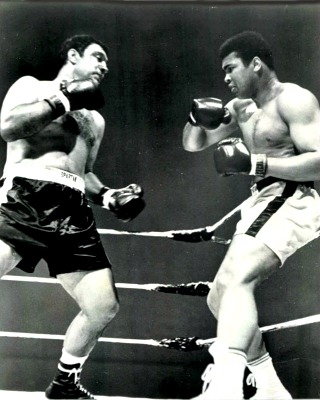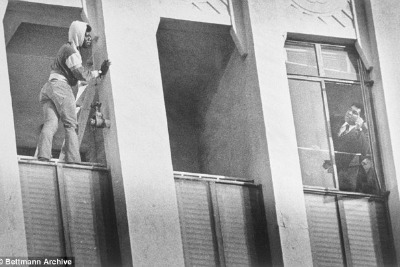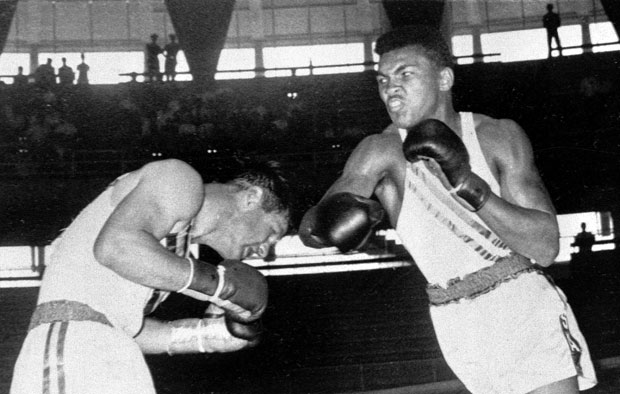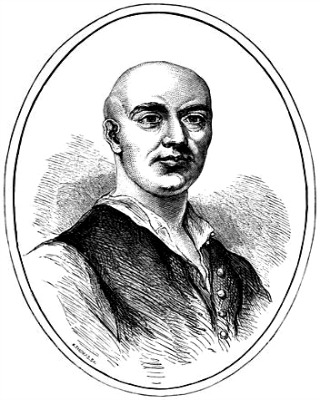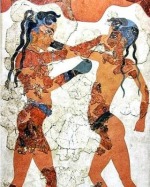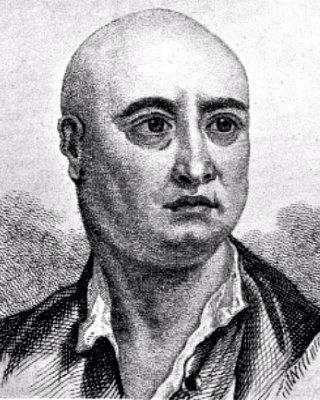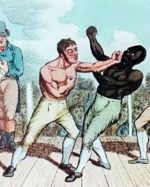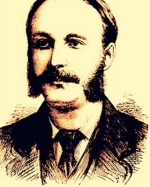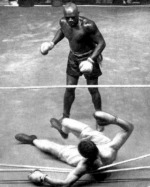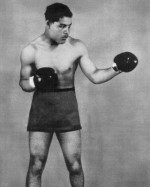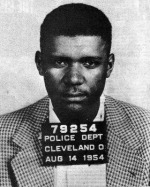Five Little Known Facts About Muhammad Ali
Talk the Talk
Born Cassius Marcellus Clay, the great American heavyweight changed his name after joining the Muslim organisation known as the Nation of Islam.
The day after winning the world heavyweight title for the first time in 1964, he announced that his name was now Cassius X, inspired by his mentor Malcolm X with the X being
symbolic of the unknown name taken from his ancestors during the days of the transatlantic slave trade.
However, when Malcolm X was suspended from the organisation, Cassius
was given the new name Muhammad Ali by the Nation of Islam’s founder, the Honourable Elijah Muhammad.
Walk the Walk
Muhammad Ali was first introduced to boxing after his bike got stolen as a child.
He found a police officer, Joe Martin, who also happened to be a boxing
trainer and after being told by the 12-year-old that he was going to “whup” the thief, Martin responded by telling him, “You better learn to box first”.
Within weeks, the young fighter had his first win under his belt and set himself apart from others with his dedication and relentless training.
Before the age of 18, he had won six Kentucky Golden Gloves Championships, two National Golden Gloves Championships and two National AAU titles, all of
which he followed up with a gold medal in the 1960 Olympics in Rome.
As a professional, Ali was the first man to become the heavyweight champion three times, holding the
title from 1964 – 67, 1974 – 78 and 1978 – 79.
He finished his career with a record of 56 wins (37 by knockout) and 5 defeats and is today regarded by many as the greatest
heavyweight boxer of all time.
Boxing Quote
"Impossible is just a big word thrown around by small men who find it easier to live in the world they’ve been given than to explore the power they have
to change it.
Impossible is not a fact. It’s an opinion.
Impossible is not a declaration. It’s a dare.
Impossible is potential.
Impossible is temporary.
Impossible is nothing".
~ Muhammad Ali ~
Impossible is not a fact. It’s an opinion.
Impossible is not a declaration. It’s a dare.
Impossible is potential.
Impossible is temporary.
Impossible is nothing".
~ Muhammad Ali ~
Muhammad Ali Negotiated the Release of American Hostages
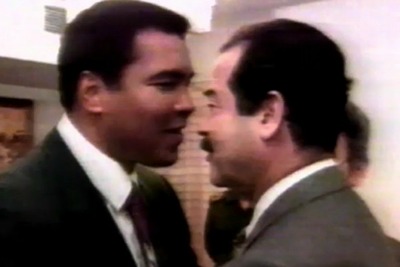
Following Iraq’s invasion of Kuwait in 1990, Saddam Hussein devised a plot to stave off American attacks by strategically placing foreign hostages (or ‘guests’ as he called them) in key locations. As one of the most famous and admired Muslims in the world, it was decided that Muhammad Ali would be an ideal ambassador to go over and negotiate the release of the fifteen Americans being used as ‘human shields’.
Ali was six years into his fight with Parkinson’s disease by this time and came under fire from certain sections of the press who accused him of only being interested in boosting his own profile. Undeterred, the People’s Champion Ali and Saddam Hussein met and he successfully negotiated with the dictator; Ali left Iraq on December 2, 1990, along with the fifteen men, all the while insisting that they do not thank him but instead give credit to Allah.
Mike Tyson Avenged Ali’s Loss to Larry Holmes
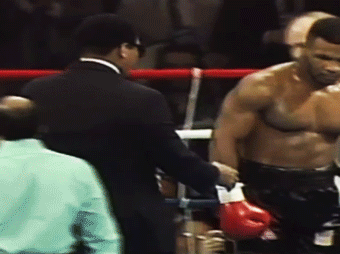
When Ali lost his final fight to Larry Holmes in 1980, a young Mike Tyson was watching on TV with his trainer, Cus D’Amato. Tyson stated;
I was offended by how bad he beat up Ali……we were all so upset. The next morning, Cus was on the phone with Muhammad Ali after taking this shellacking from Holmes. He said to Ali, ‘I have this young black kid who is going to be heavyweight champion someday and I want you to talk to him.'
When Ali and Tyson spoke, the 14-year-old future champion told his idol, “When I grow up, I'll fight Holmes and I'll get him back for you,” a promise that Tyson duly kept. Seven years later Mike Tyson, now the undisputed heavyweight champion, met Holmes in the ring. Ali was a guest at the fight and when he entered the ring before the first bell to shake the fighter’s hands, he whispered to Tyson, “Remember what you said – get him for me.” Holmes was demolished in the fight that ensued and was knocked out in the fourth round after a vicious array of right hooks.
The Muhammad Ali vs Rocky Marciano Super Fight
During the time Ali was serving his ban from boxing for refusing to fight in Vietnam in the late 1960s, a radio show was ‘deciding’ who the greatest heavyweight boxer of all time was. Fights were acted out on the show, with the results being decided by a second-generation NCR 315 computer, packed with 5k of handmade core memory.
It was predicted that Ali would lose in the quarter-final stage to Jim Jeffries which left him furious. Jeffries had become the first so-called Great White Hope when he came out of retirement to fight Jack Johnson in 1910, a fight that Jeffries lost. Ali declared that the government had taken his title and now the man responsible for the simulated fights, Murry Woroner, was trying to take his good name by suggesting he would lose to a man he described as, “history's clumsiest, most slow-footed heavyweight.”
The former champion threatened to sue for defamation with a $1 million lawsuit. However, an agreement was made by the two parties when he was offered nearly $10,000 for a Muhammad Ali Vs Rocky Marciano exhibition bout that would be aired in cinemas all over the country, with the result decided by the computer.
The ‘fight’ was filmed in 1969 with the two throwing light punches for seventy, one minute rounds with several endings filmed so the result would not leak before the battle was aired. When it did, it played out much like the Sylvester Stallone movies of the 1980s and 90s about Marciano’s namesake. Rocky was covered in blood, knocked down a number of times and behind on points before coming back strong and winning by KO in the thirteenth round.
Later, Ali stated that it was all a sham and no computer was involved in the outcome of the Ali vs Marciano super fight. This is probably true as according to Marciano’s brother, Peter, the two had talked about the fight before it was aired and Rocky had predicted the outcome to the letter.
Ali Fought Japanese Wrestler Antonio Inoki
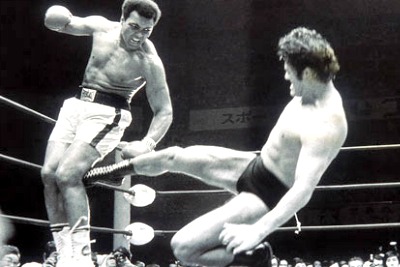
In what has been described as an early mixed martial arts contest, Muhammad Ali once fought a famous Japanese professional wrestler named Antonio Inoki. The 1976 fight was billed as a battle to find the ‘toughest man on earth’ though it was a farce from the very beginning.
The Ali camp believed it would be just an exhibition match but when they saw Inoki training hard just before the fight took place, they realised he was taking it very seriously. They threatened to pull out unless several rule changes were made, including no punching for the bare-fisted wrestler and that he can only kick when he was on the ground. This left Inoki with very few options once the bout began so he spent most of the fight on the canvas trying to kick his opponent.
In response, Ali stayed out of range for the most part, taunting his opponent but to no avail. He threw just six punches for the entire fifteen-round fight, which ended in a draw and with the enraged crowd throwing trash into the ring and chanting; ‘money back, money back.’
Muhammad Ali Talked a Veteran out of Committing Suicide
In 1981, Ali happened to be near the scene of a situation that was worsening by the minute. A Vietnam veteran was on a ninth-floor ledge of a building threatening to jump, shouting; “I’m no good, I’m going to jump, the Viet Cong are coming at me!” After the police, a psychologist and a minister had all failed to talk the man down, the People’s Champion volunteered to help. He made his way to a nearby window and told the man, “I’m your brother, I want to help you.” Soon, the man allowed Ali to approach and after a tense twenty minutes, the man came off the ledge and was taken for psychiatric evaluation with Ali promising to visit him later that week.
Written by Andrew Griffiths – Last updated 22/06/2023. If you like
what you see, consider following the History of Fighting on social media.
Further Reading:
Bull, A. [Internet]. 2009. The forgotten story of ... Muhammad Ali v Antonio Inoki. The Guardian. Available from: http://www.theguardian.com/sport/blog/2009/nov/11/the-forgotten-story-of-ali-inoki [Accessed July 2, 2014].Drinkwater, G. [Video]. 1981. Muhammad Ali Saves Man from Suicide Jump. CBS News. Available from: https://www.youtube.com/watch?v=SV75aFzC1aQ [Accessed July 2, 2014].
Howard, G. A. [Internet]. 2012. Ali – The Boxer. The Official Site of Muhammad Ali. Available from: http://www.ali.com/legend_boxer_main.php [Accessed June 4, 2014].
Ingle, S. [Internet]. 2013. The forgotten story of … the Rocky Marciano v Muhammad Ali Super Fight. The Guardian. Available from: http://www.theguardian.com/sport/blog/2012/nov/13/forgotten-story-rocky-marciano-muhammad-ali [Accessed July 2, 2014].
Martin, A. [Video]. 2013. Ali: The Mission. ESPN. Available from: https://www.youtube.com/watch?v=PMNwCZ-ZHmE [Accessed July 2, 2014].
Rafael, D. [Internet]. 2011. Mike Tyson Reflects on his HOF Career. ESPN. Available from: http://espn.go.com/blog/dan-rafael/post/_/id/53/mike-tyson-reflects-hof-career-boxing [Accessed July 2, 2014].
More Boxing History
Boxing History Home
The history of boxing dates back in one form or another as far as civilisation itself with ancient Greek boxing even being a part of the early Olympic Games. Modern boxing rules have made the sport safer for the fighters and more entertaining for the crowds, resulting in pugilism becoming one of the most popular athletics events on the planet today.
The history of boxing dates back in one form or another as far as civilisation itself with ancient Greek boxing even being a part of the early Olympic Games. Modern boxing rules have made the sport safer for the fighters and more entertaining for the crowds, resulting in pugilism becoming one of the most popular athletics events on the planet today.
Boxing in the Ancient World
Ancient boxing dates back to the Samarian culture and probably beyond and is known to have also been a part of the Egyptians and Minoan civilisations. It became an event in the ancient Olympic games in Greece in 688 BCE, and ancient Roman boxing was also practiced by athletes, gladiators and Roman soldiers.
Ancient boxing dates back to the Samarian culture and probably beyond and is known to have also been a part of the Egyptians and Minoan civilisations. It became an event in the ancient Olympic games in Greece in 688 BCE, and ancient Roman boxing was also practiced by athletes, gladiators and Roman soldiers.
Boxing in the 18th Century
Modern boxing history really began to develop into the sport known and loved today in the 18th century. Bare knuckled boxing contests began to be regulated and safety measures also began to be put in place. However, the period was also marred by controversy as it saw the first instances of corruption in the form of prize fighters taking payoffs and intentionally losing fights.
Modern boxing history really began to develop into the sport known and loved today in the 18th century. Bare knuckled boxing contests began to be regulated and safety measures also began to be put in place. However, the period was also marred by controversy as it saw the first instances of corruption in the form of prize fighters taking payoffs and intentionally losing fights.
Boxing in the 19th Century
This list of bare-knuckle boxers from the 19th century charts those who are generally accept as being World Champions. It includes some of the best fighters from this period in boxing history starting with Jem Belcher, the first champ of the new century and concluding with Jem Mace, who made the switch from bare-knuckle boxing to using boxing gloves after the introduction of the Queensbury Rules.
This list of bare-knuckle boxers from the 19th century charts those who are generally accept as being World Champions. It includes some of the best fighters from this period in boxing history starting with Jem Belcher, the first champ of the new century and concluding with Jem Mace, who made the switch from bare-knuckle boxing to using boxing gloves after the introduction of the Queensbury Rules.
Post-Queensbury Rules Boxing Culture
With the introduction of the Queensbury Rules in 1867, boxing culture was dramatically changed. The safety of the boxers was much improved though bare-knuckle boxing was still popular and as brutal as ever. For black boxers however, things actually changed for the worse as it became increasingly difficult for many of them to reach their full potential as a result of institutional racism.
With the introduction of the Queensbury Rules in 1867, boxing culture was dramatically changed. The safety of the boxers was much improved though bare-knuckle boxing was still popular and as brutal as ever. For black boxers however, things actually changed for the worse as it became increasingly difficult for many of them to reach their full potential as a result of institutional racism.
Sam Langford
Sam Langford, aka the Boston Tar Baby, was one of the greatest boxers never to be crowned world champion. Fighting in the early half of the twentieth century, he was a victim of the colour line in boxing and was not afforded a chance at the title because of the colour of his skin despite the fact that the champion at the time, Jack Johnson, was an African American.
Sam Langford, aka the Boston Tar Baby, was one of the greatest boxers never to be crowned world champion. Fighting in the early half of the twentieth century, he was a victim of the colour line in boxing and was not afforded a chance at the title because of the colour of his skin despite the fact that the champion at the time, Jack Johnson, was an African American.
Joe Louis
Joe Louis (The Brown Bomber) was an American boxer and widely considered to be one of the greatest world heavyweight champions of all time. He became an American hero when he defeated the German Max Schmeling, then later through his work promoting the war effort. Despite his considerable success, later in his career he would face massive debts due to unfair treatment by the taxman.
The Reign of Don King
Don King is an influential American boxing promoter who has staged some of the biggest fights in boxing history, increased the prize money earned by fighters and considerably raised public interest in the sport, all in his own charismatic and outspoken style. Despite this, King’s career has been constantly marred by controversy leading to him being both loved and hated in the world of boxing.
Don King is an influential American boxing promoter who has staged some of the biggest fights in boxing history, increased the prize money earned by fighters and considerably raised public interest in the sport, all in his own charismatic and outspoken style. Despite this, King’s career has been constantly marred by controversy leading to him being both loved and hated in the world of boxing.
The images on this site are believed to be in the public domain, however, if any mistakes have been made and your copyright or intellectual rights have been breeched, please contact andrew@articlesonhistory.com.

